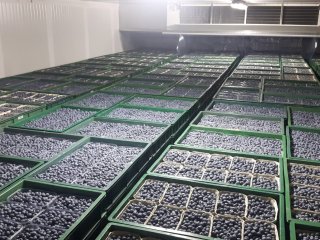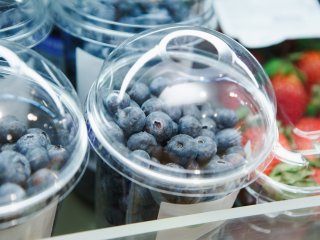
The blueberry supply chain
Best practices in each step of the fresh supply chain have a great influence on the postharvest quality and shelf-life of blueberries. By using appropriate harvest processes and supply chain conditions, blueberry quality can be maintained longer and shelf life can be extended. Failure to follow these processes may result in a higher degree of loss or deterioration of the blueberries to a lower quality class. Every step in the chain is important for success later in the chain.

The blueberry chain
Blueberries are a highly appreciated soft fruit produced in several climatic regions in the world. They are climacteric fruits but the edible quality does not improve after harvest. Hence blueberries should be picked at a near to full ripe stage. Fast cooling upon harvesting is an important postharvest strategy. Therefore, the packhouse should be located at a short distance from the production fields. Further handling of the berries includes grading, sorting and packaging in consumer packages or transport boxes (bulk packaging). Afterwards the packed berries are loaded in reefer containers or refrigerated trucks to assure good temperature conditions during transportation. Blueberries transported in bulk packages are repacked in consumer packages at the importer packhouse offering flexibility in the supply chain. Finally, consumer packages are transported from retail distribution centers to the supermarkets. A closed cold chain is important to achieve an high quality product at the retail.




